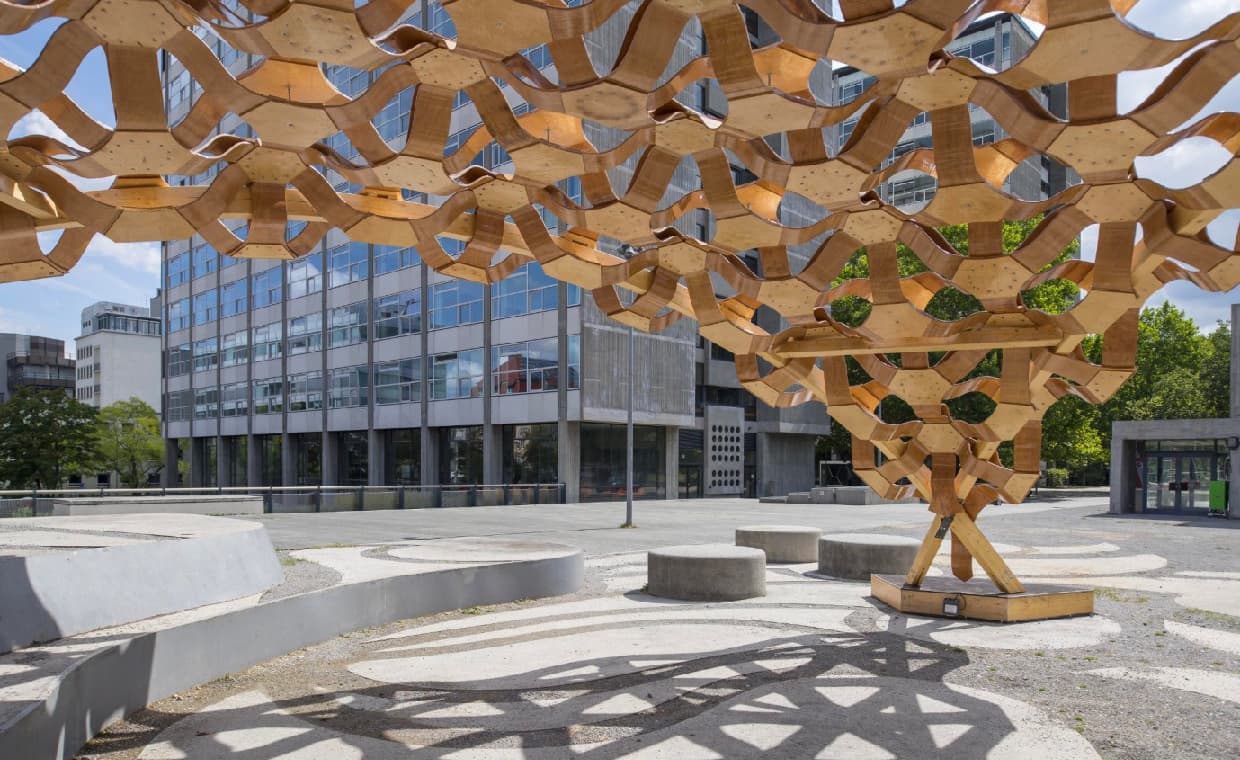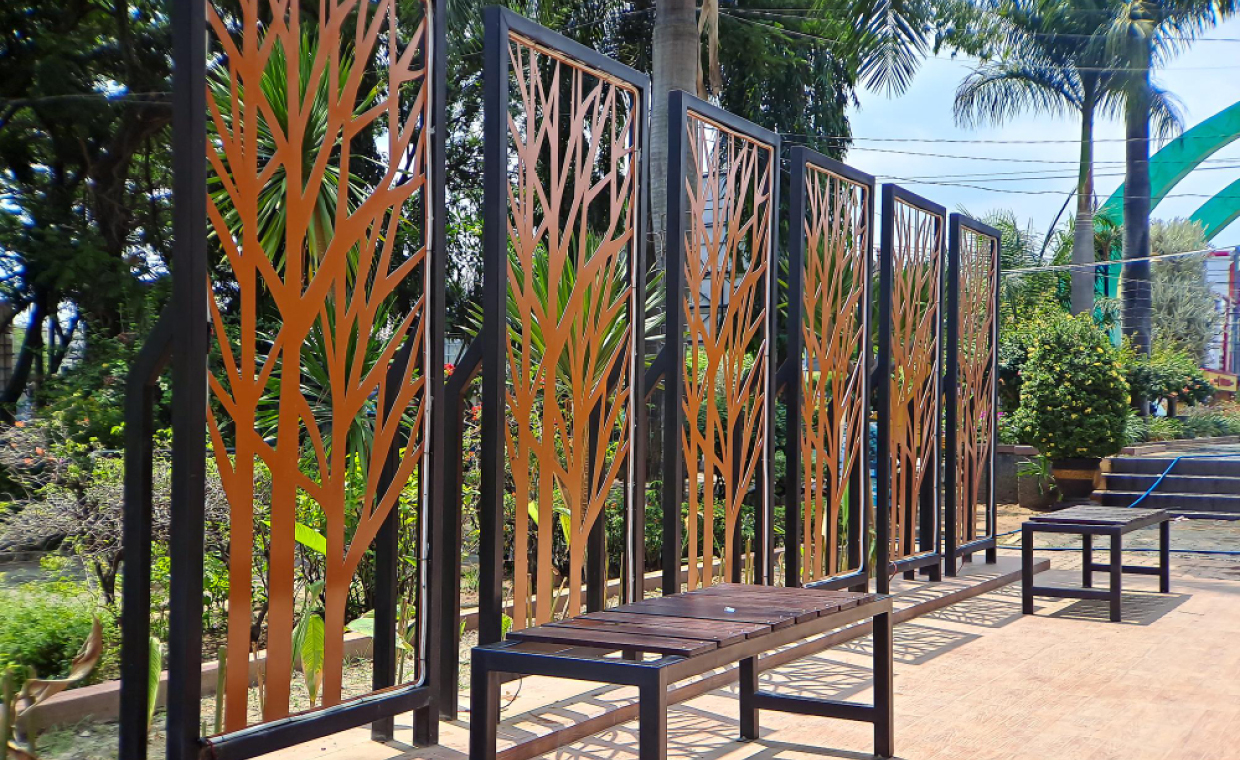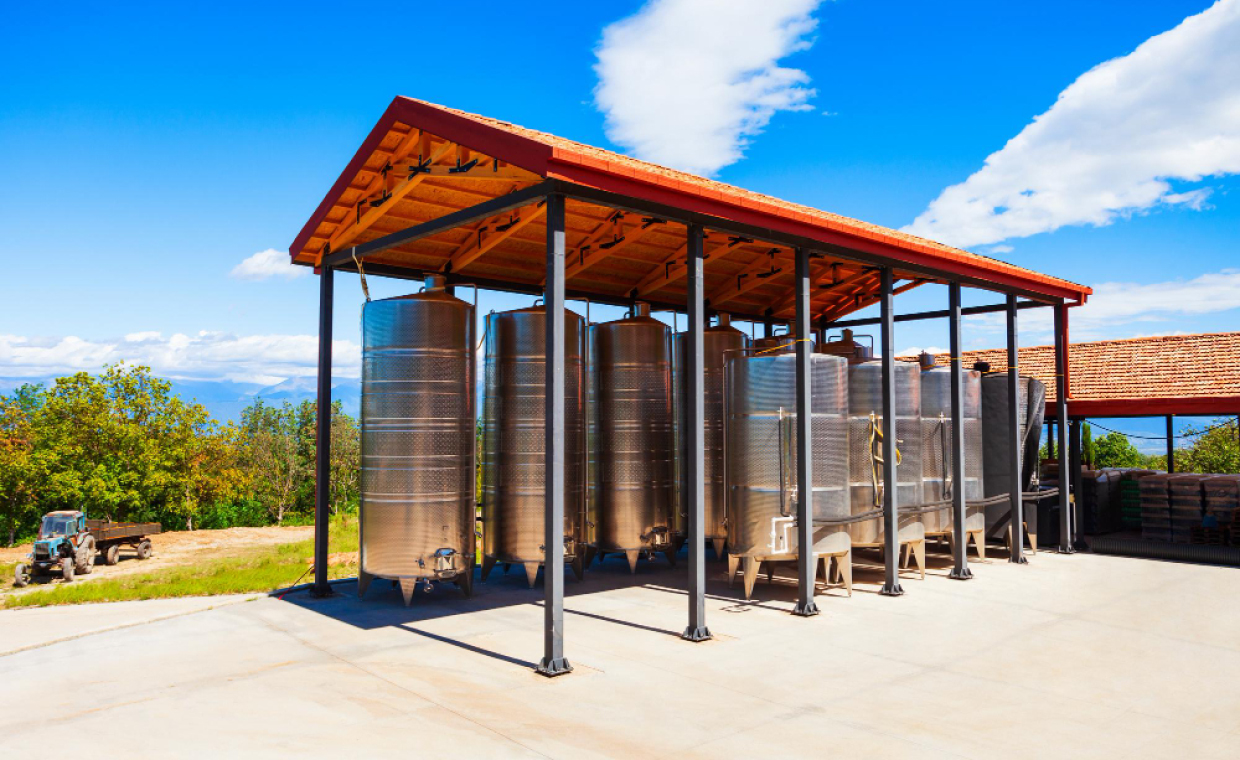
With the world inclining towards a greener and cleaner future, there is a great shift in the architecture and construction industries. The architectural practices are changing according to the sense of realisation of curating techniques and materials that go well with nature.
In the current scenario, the derivation of building materials from natural elements is gaining momentum among architects and designers. These materials have contributed to the well-being of the environment and the aesthetic and economic value of putting structures together. Therefore, many new-fangled materials have paved their way into the world of green architecture. This is due to their wonderful potential as substitutes for the conventional materials that we already have.
Bio-composite architecture is one such field that has been constantly marching towards a greener future. To get you acquainted, a bio-composite material possesses two or more constituent materials that are mixed to form a single material. Let’s dive a little deeper into this topic for better insights into bio-composite materials. We have compiled a list of several such materials that make up the basic elements of creating bio-composite materials.
Top 15 Natural Materials that put Together Biocomposite Materials
01. Cellulose as Biocomposite Material

When cellulose fibres are added to the concrete at a volume of 0.5%, their initial compressive strength is marginally decreased, but their flexural strength is increased by 7.84%, demonstrating a strong connection. They improve water resistance significantly, by reducing water penetration depth by 24% and the permeability coefficient by 42%. These fibres improve self-healing qualities and help internal cure by serving as water reservoirs. When compared to ordinary concrete, CeFRC exhibits higher ultrasonic pulse velocity, suggesting superior autogenous healing. Additionally, it exhibits rapid initial healing, which can be enhanced by combining it with other self-healing ingredients like crystalline admixtures or bacteria. Overall, cellulose fibers enhance the strength and durability of concrete, which has benefits for civil engineering and architecture.
02. Bio-composite Material – Lignin

Lignin, a natural plant polymer, reduces the carbon footprint in construction by replacing cement in concrete. It improves concrete properties, enhances workability, and retains water during curing. It strengthens composite materials, boosts durability in construction, encourages the use of renewable resources, supports sustainable building practices, and aids in soil stabilization. Its applications extend to infrastructure projects like bridges and road pavement, where it enhances performance while reducing environmental impact.
03. Bagasse

Also termed sugarcane, bagasse is the by-product obtained during sugar production. Conventionally, this bio-composite constituent is used in papermaking and as feed for animals.
Bagasse is one of the most popular green materials in the construction industry. It is used in creating biodegradable composite materials.
04. Bamboo as Bio-composite Material

Bamboo, a popular grass material with over 1,400 types, is used in new-age structures and furniture due to its mechanical strength, stiffness, low density, and high modulus. Its fibres are obtained from the pulp of bamboo plants.
Bamboo can also be used as an alternative to steel reinforcement. Here’s to know in depth:
Use of Bamboo as Reinforcement in Concrete
05. Biocomposite Material – Corn

Corn is a popular food item in many nations. Hence, its production is on a relatively large scale. This leads to the creation of fibrous by-products such as corn cob and corn husk.

Corn cob is an effective filler for external walls. Also, it is a great element for achieving high-quality thermal insulation. Hence, corn is a great material that forms the core of bio-composite architecture.
06. Wood

Wood has been one of the favourite materials in the architecture and construction industries.
Wood can be categorised into two types: softwood and hardwood. Both are wonderful reinforcement and filler materials. Oak, beech, maple, and birch are some types of hardwood trees. Cedar, larch, and pine are popular softwood trees.
Here are some characteristics and properties of wood as a building material:
Characteristics & Properties of Wood as a Home Building Material!
07. Oil Palm

Oil palm is a crop generally harvested in Malaysia and Indonesia. It is grown extensively for palm oil and the production of paper.
Palm oil clinker (POC) is an exemplary coarse aggregate excellent for curating pervious concrete (PC). This facilitates the enhancement of the concrete’s compressive and flexural strength.
08. Jute as Bio-composite Material

Jute is one of the most commonly used fibre. From creating bags and rugs to chair coverings, jute is useful for umpteen purposes.
Adding jute fibres to cement increases cement’s strength by delaying its setting. Burlap, a cloth-like material made from jute, helps during the curing process of newly built structures.
09. Hemp

Hemp has found its way into the construction industry since ancient times. It has high strength, flexibility, and thermal and insulation power.
Hemp is used in curating a new-age material called hempcrete. Superior carbon absorption capacity and natural air purification ability are some advantages that it brings along. In amalgamation with traditional materials, hemp creates lightweight structures.
10. Banana as Bio-composite Material

Banana plant barks boast a fine mechanical strength, making them a wonderful reinforcement component in the building fraternity.
Banana fibre is mixed in soil building blocks to enhance the ductility, impact resistance, and toughness of certain chemical reactions.
11. Cotton

Cotton is one of the most popular clothing materials. Due to its relatively low mechanical strength, cotton is barely used as a reinforcement material. However, its natural properties make it a loved choice for curating green hybrid composites. Not to forget, cotton is used for making the most aesthetic and functional furnishings and decor items, such as rugs.
12. Flax

One of the oldest textile raw materials to be known, flax has proved its worth in the building industry as well. The material is extensively used for producing tents, canvases, towels, and much more.
Flax is lightweight and has fire-retardant properties. Thus, it is a popular choice for building partition walls and insulating panels.
13. Coir as Biocomposite Material

Obtained as a by-product of multiple coconut products, Coir entails a highly fibrous structure. It also has great mechanical and dynamic properties.
Coir fibres enhance concrete quality by increasing torsion, toughness, and tensile strength, thereby enhancing its resistance to cracking and spalling.
14. Nettle

Nettle is a perennial crop with properties similar to flax. It is one of the key components in bio-composite material curation due to its mechanical properties and carbon footprint reduction capabilities.
15. Pineapple in Construction Industry

While the popularity of pineapple as a pizza topping might be debatable, its use as a bio-composite constituent is not. Pineapple is a tropical fruit that is making its way into the construction industry.
The fibres of this fruit help enhance the tensile strength of concrete. This, in turn, helps in the reduction of crack formation.
Top 3 Elements that Define the Future of Biocomposite Materials
01. Mycelium Materials

Mycelium, a fungus’ vegetative component, contains natural polymers, like chitin, cellulose, proteins, etc.
Thus, these materials are curated by electing the desired substrates as per the properties required. The materials obtained are combined by synthesising them. This, in turn, helps in the curation of sustainable, biodegradable, and bio-composite materials used in the construction industry.
02. Programmable Biocomposites

Programmable bio-composites are materials that are digitally fabricated through the process of programming. These materials carry specific properties about their purpose, which can be altered in heat and humidity. The concept utilises the natural ecosystem as its inspiration, reducing waste production.
03. Bio-Bricks

Bio-bricks are made by mixing sand with bacteria that break down urea in urine, producing calcium carbonate to bind the sand into solid bricks. They offer sustainability by repurposing urine and eliminating the need for high-energy kiln firing, reducing carbon emissions. Bio-bricks contribute to waste recycling and agricultural sustainability by producing nitrogen and potassium by-products. However, they may have variability in strength and longer production times compared to traditional bricks. Social acceptance may pose challenges due to the use of urine in construction materials. Overall, bio-bricks offer a promising solution for sustainable construction practices.
Besides bio-composite materials, here we share some interesting eco-friendly materials for a sustainable future.
8 Eco Friendly Building Materials Utilised in Green/Sustainable Buildings!
The Promise of a Greener Future…

Bio-composite materials entail a myriad of natural elements as their constituents. Generally, these materials are part of the natural ecosystem. Due to this, the materials obtained are sustainable, cost-effective, and good for the environment.
The globe will become greener in the future with the wider and more effective use of bio-composite materials. These resources are also easily accessible and significantly lessen the amount of garbage produced. Consequently, in the long run, using such bio-composite materials can improve architectural practices.
FAQs
01. What are Bio-composite Materials?
Bio-composite Architecture is one field that has been contributing significantly in moving towards a greener future. A bio-composite material possesses two or more constituent materials that are merged to form a single material.
02. What natural elements constitute Bio-composite Materials?
Following are some natural elements that constitute bio-composite materials:
- Cellulose
- Lignin
- Bagasse
- Bamboo
- Corn
- Wood
- Oil Palm
- Jute
- Hemp
- Banana
- Cotton
- Flax
- Coir
- Nettle
- Pineapple
03. What are some Upcoming Trends in the world of Biocomposite Materials?
Following are some popular upcoming trends in the world of bio-composite materials:
- Mycelium Materials
- Programmable Biocomposites
- Bio-Bricks
04. What are Mycelium Materials?
Mycelium is the vegetative component of fungi. It is composed of a plethora of natural polymers. These include chitin, cellulose, proteins, and a lot more. Thus, these materials are curated by electing the desired substrates as per the properties required through synthesis.
05. What are Bio-Bricks?
Amalgamating sand and bacteria that produce urases create a material termed bio-bricks. The material boasts exemplary sound insulating and heating properties.
Image Courtesy: Image 1, Image 2, Image 3, Image 4, Image 5, Image 6, Image 7, Image 9, Image 10, Image 11, Image 12, Image 13, Image 14, Image 15, Image 16, Image 17, Image 18, Image 19, Image 20, Image 21
Author Bio
Saili Sawantt – She is an Architect and Interior Designer by profession. Writing is what she treats as her passion. She has worked as an Architectural Writer, Editor, and Journalist for various design as well as digital portals, both national and international. Formerly she has also worked with Godrej Properties Limited (GPL) Design Studio, Mumbai, due to her keen interested in learning about Sustainability and Green buildings. Apart from this, she runs her blog ‘The Reader’s Express’ and is a practicing Architect & Interior Designer.






























